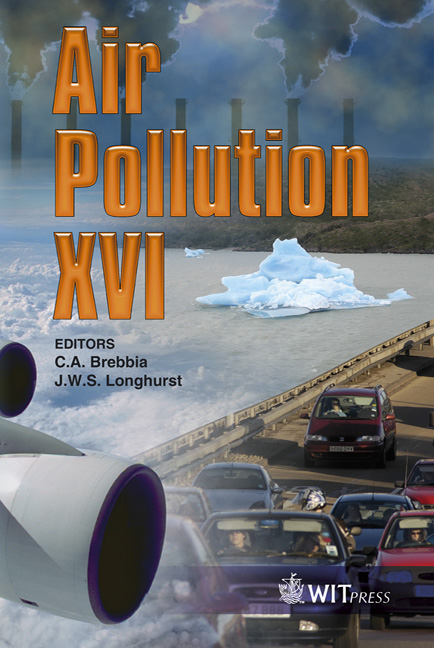Variation Of Air Pollution With Related Meteorological Factors In Tripoli (case Study)
Price
Free (open access)
Transaction
Volume
116
Pages
10
Page Range
397 - 406
Published
2008
Size
430 kb
Paper DOI
10.2495/AIR080401
Copyright
WIT Press
Author(s)
T. A. Sharif, A. K. El-Henshir & M. M. Treban
Abstract
Ground level concentrations of nitrogen oxides NOx, ozone O3 and some meteorological variables in downtown Tripoli were measured and analyzed as a case study. It is indicated that there are strong relationships between the air pollution gases such as nitrogen oxides NOx, nitrogen monoxide NO, nitrogen dioxide NO2, in addition to ozone O3 and the meteorological factors such as wind speed and direction, solar radiation and temperature. These relationships are positive for some gases and negative for others. Ozone and nitrogen dioxide are formed during photochemical processes by conversion of nitrogen monoxide by chain reaction, with participation of hydrocarbons and organic compound products. Low concentrations of nitrogen oxides and nitrogen monoxide were observed during the daytime while high concentrations of ozone and nitrogen dioxide were observed during the same period. In other words, these gases showed marked diurnal variation characteristics. Pollutant emissions follow the cycles of human activity and traffic load with rapid rises near the start of each day’s activities, various degrees of decrease or increase around midday, increases in early evening, and declines late at night. Such traffic load activity obviously depends on various characteristics of meteorological factors, and the meteorological factors have a significant impact on air quality. Keywords: pollutant concentrations, meteorological factors, air pollution gases, traffic load, photochemical processes, diurnal variation.
Keywords
pollutant concentrations, meteorological factors, air pollution gases, traffic load, photochemical processes, diurnal variation.





